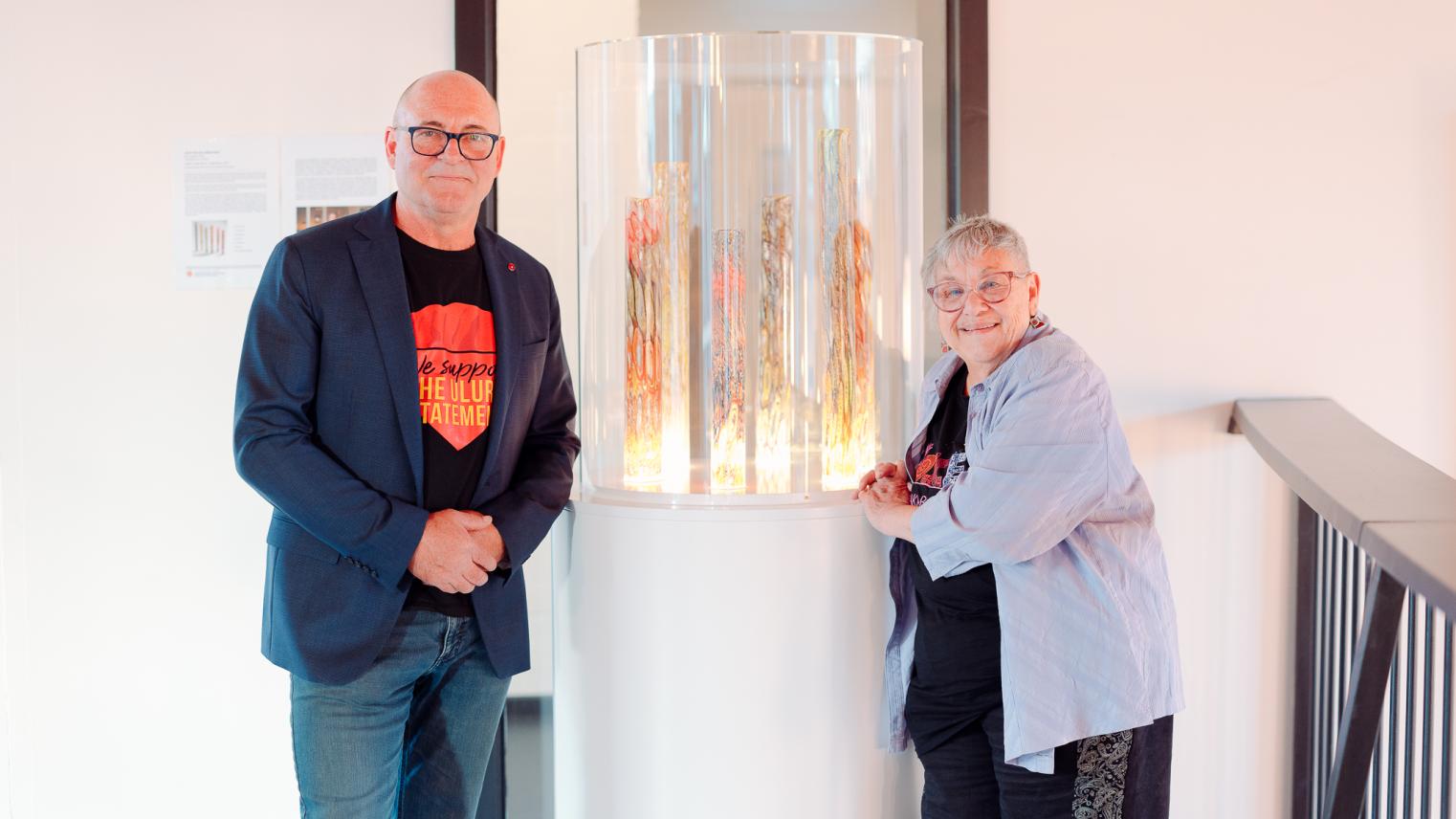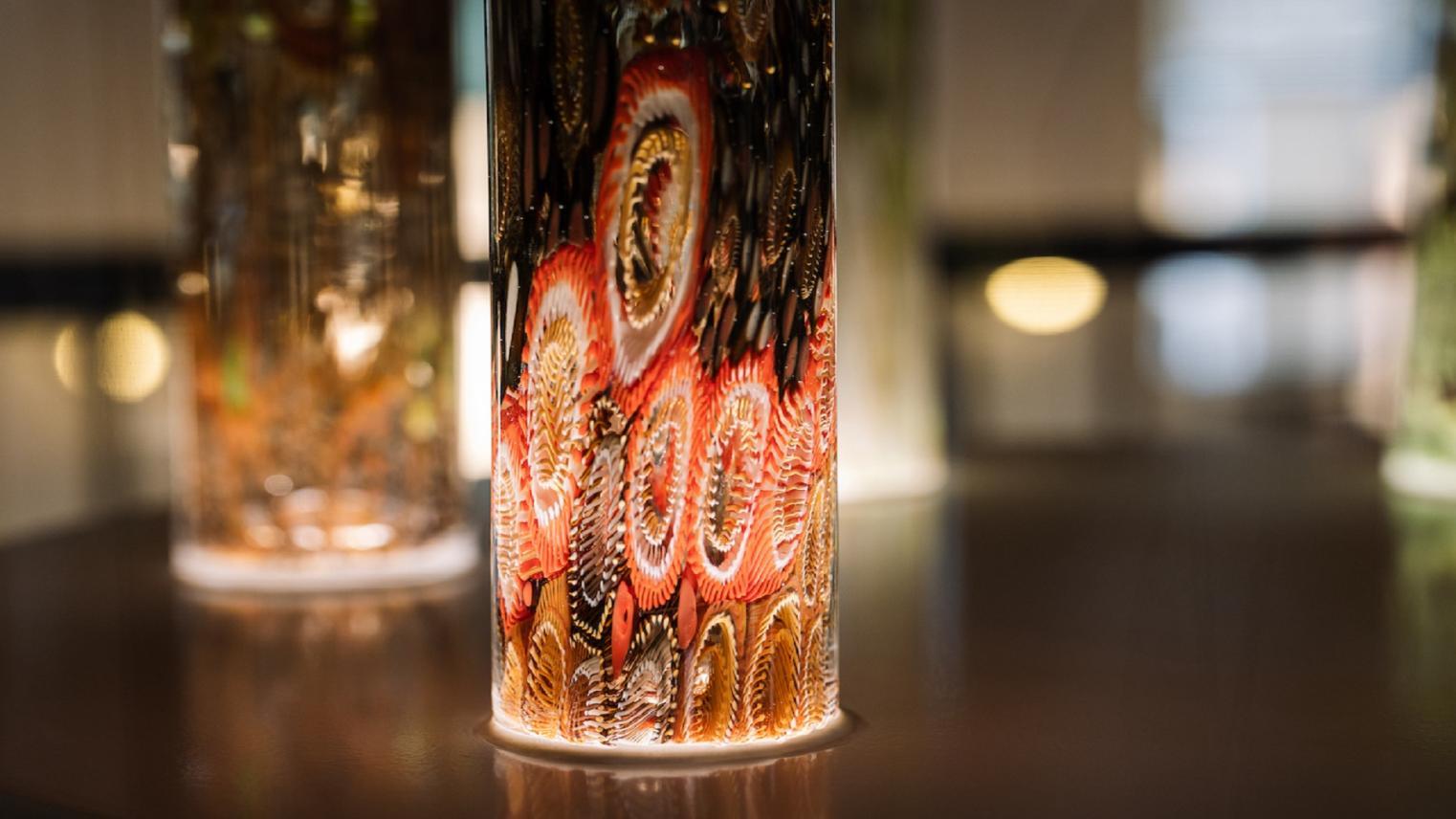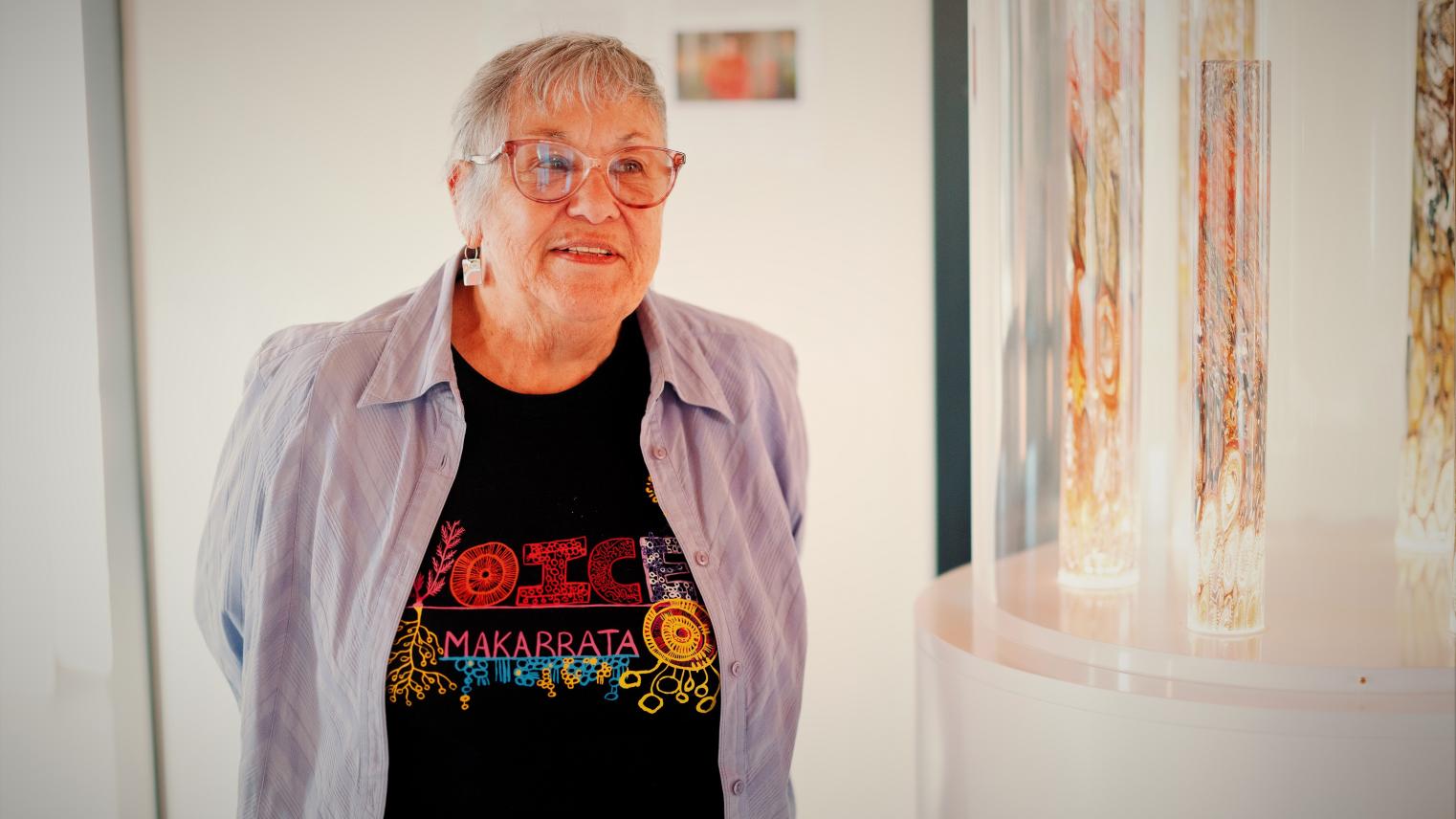Sculpting Science: A Glass Act

When art and science collide, you can expect an explosion of perspectives, culture, creativity, and exploration. The practice of marrying the arts and sciences is certainly not new, but we are talking about the latest exciting adventure that Professor Simon Haberle from the ANU School of Culture, History & Language has just embarked on—in partnership with multi-award-winning artist Jennifer Kemarre Martiniello: The Stories Beneath My Ancestors’ Footprints.
Jennifer, who is of Aboriginal (L. Southern Arrernte), Chinese and Anglo-Celtic descent, will share her personal story via this project, alongside Professor Haberle, as an Australian Network for Art and Technology (ANAT) Synapse 2024 artist in residence.
This collaboration focuses on creative research and practice to discover the paleoecological substrata of Jennifer’s Aboriginal and Chinese ancestors’ lands. Mentored by Professor Haberle, the artist will delve into geo-culturally specific data, exploring the ancestral identity through pollens, diatoms, phytoliths, charcoal deposits, and spores. Her innovative approach blends art and science, resonating with the heart of her Aboriginal storytelling practice.
This exploration at the intersection of the arts and the sciences will tell many stories—that of the artist’s multicultural heritage, her aesthetic expression, and the story of glass and how it intertwines in different narratives.
“As an Aboriginal (Arrernte) artist, storytelling is the heart of my artistic practice. In 2014 I created my first series of hot blown glass cylindrical Voice Cores, inspired by a long-held fascination with the capacity of scientific cores sunk into the earth to access a place’s deep time through the analysis of ecopaleological spores, pollen, and sediments.”
Equally, this collaboration will tell—through Professor Haberle’s lens—the story of paleoecology; of landscape and environment and what has changed over the past 60,000 years; it will tell the stories of human connection with land itself.

Voice Cores 1-6
Renowned for making glass vessels inspired by woven forms traditionally made by Indigenous peoples, Jennifer uses glass to explore the relationships between cultures and expresses them through her personal relationship to the land. In 2023, Jennifer’s Voice Cores 1- 6 became a permanent exhibit at the ANU.
The artwork comprises six colourful tall glass cores, lit from the base. Each core represents the shapes and resonances of the First Voices for each of the places named (#1 Rainforest, #2 Mutawintji, #3 Palawa, #4 Tarkayna, #5 Mungo, #6 Red Gibber Desert), its vowels consonants, syllables; each captured in the colours and forms of the natural environment of each place.
The work is a reimagining and reshaping of the work of researchers seeking to understand how past landscapes change over time by extracting sediment cores from the Earth's surface for analysis in the laboratory. What if, instead of compacted layers of earth, those sample cores brought up the shapes and sounds of the voices of that place's first peoples, their stories, songs and ceremonies?


About ANAT
Since its genesis in 2004, the ANAT Synapse program has enabled research collaborations between more than 100 artists and scientists. It has facilitated crossovers between numerous artistic and scientific disciplines over the years – between sound design and ecology, new media and data science, and poetry and astrophysics, just to name a few.
Jennifer's ANAT Synapse residency program is supported by the Australian Network for Art and Technology (ANAT) and the ANU School of Culture, History & Language within the College of Asia and the Pacific at the Australian National University.
Both Professor Haberle and Jenni Martiniello are delighted and grateful to ANAT for this amazing opportunity to be their Synapse collaborators this year.
About the Artist
Jenni Kemarre Martiniello is an award-winning visual artist, poet, writer, and photographer of Arrernte, Chinese and Anglo-Celtic descent. After graduating in 1985 from the Australian National University’s School of Art with a major in sculpture, Jennifer has built an impressive body of work which celebrates her Aboriginal heritage and pays tribute to the oldest weaving practices in the world.
She was NAIDOC Artist of the Year in 2010 and was awarded Canberra Critics Circle Awards for Visual Arts in 2011 and 2013. In 2013 she won the prestigious Telstra Prize for Aboriginal and Torres Strait Islander Art. Her works are held in numerous public and private collections including the National Gallery of Australia, the Australian Parliament House Collection, the National Museum of Palau, the National Art Gallery of the Solomon Islands, the Corning Museum of Glass and the British Museum. Jenni works from her studio at Canberra Glassworks.

About the Scientist
Simon Haberle is Professor of Palaeoecology and Natural History at the ANU School of Culture, History & Language, within the College of Asia and the Pacific. His research is currently focussed on our understanding of the impact of deep-time climate variability and human activity on terrestrial ecosystems of Australia and the region. He is also using his knowledge of Australian pollen to explore the impact of pollen and spores on respiratory health.

